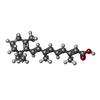Entry Database : PDB / ID : 1g5yTitle THE 2.0 ANGSTROM RESOLUTION CRYSTAL STRUCTURE OF THE RXRALPHA LIGAND BINDING DOMAIN TETRAMER IN THE PRESENCE OF A NON-ACTIVATING RETINOIC ACID ISOMER. RETINOIC ACID RECEPTOR RXR-ALPHA Keywords / / Function / homology Function Domain/homology Component
/ / / / / / / / / / / / / / / / / / / / / / / / / / / / / / / / / / / / / / / / / / / / / / / / / / / / / / / / / / / / / / / / / / / / / / / / / / / / / / / / / / / / / / / / / / / / / / / / / / / / / / / / / / / / Biological species Homo sapiens (human)Method / / Resolution : 2 Å Authors Gampe Jr., R.T. / Montana, V.G. / Lambert, M.H. / Wisely, G.B. / Milburn, M.V. / Xu, H.E. History Deposition Nov 2, 2000 Deposition site / Processing site Revision 1.0 May 2, 2001 Provider / Type Revision 1.1 Apr 27, 2008 Group Revision 1.2 Jul 13, 2011 Group Revision 1.3 Nov 9, 2016 Group Revision 1.4 Oct 4, 2017 Group / Category Revision 1.5 Apr 4, 2018 Group / Category / Item Revision 2.0 Apr 25, 2018 Group Atomic model / Data collection ... Atomic model / Data collection / Derived calculations / Non-polymer description / Structure summary Category atom_site / chem_comp ... atom_site / chem_comp / entity / pdbx_entity_nonpoly / pdbx_nonpoly_scheme Item _atom_site.auth_comp_id / _atom_site.label_comp_id ... _atom_site.auth_comp_id / _atom_site.label_comp_id / _chem_comp.formula / _chem_comp.formula_weight / _chem_comp.id / _chem_comp.mon_nstd_flag / _chem_comp.name / _chem_comp.type / _entity.pdbx_description / _pdbx_entity_nonpoly.comp_id / _pdbx_entity_nonpoly.name / _pdbx_nonpoly_scheme.mon_id / _pdbx_nonpoly_scheme.pdb_mon_id Revision 2.1 Oct 16, 2024 Group / Database references / Structure summaryCategory chem_comp_atom / chem_comp_bond ... chem_comp_atom / chem_comp_bond / database_2 / pdbx_entry_details / pdbx_modification_feature Item / _database_2.pdbx_database_accession
Show all Show less
 Yorodumi
Yorodumi Open data
Open data Basic information
Basic information Components
Components Keywords
Keywords Function and homology information
Function and homology information Homo sapiens (human)
Homo sapiens (human) X-RAY DIFFRACTION /
X-RAY DIFFRACTION /  SYNCHROTRON / Resolution: 2 Å
SYNCHROTRON / Resolution: 2 Å  Authors
Authors Citation
Citation Journal: Genes Dev. / Year: 2000
Journal: Genes Dev. / Year: 2000 Journal: Mol.Cell / Year: 2000
Journal: Mol.Cell / Year: 2000 Structure visualization
Structure visualization Molmil
Molmil Jmol/JSmol
Jmol/JSmol Downloads & links
Downloads & links Download
Download 1g5y.cif.gz
1g5y.cif.gz PDBx/mmCIF format
PDBx/mmCIF format pdb1g5y.ent.gz
pdb1g5y.ent.gz PDB format
PDB format 1g5y.json.gz
1g5y.json.gz PDBx/mmJSON format
PDBx/mmJSON format Other downloads
Other downloads 1g5y_validation.pdf.gz
1g5y_validation.pdf.gz wwPDB validaton report
wwPDB validaton report 1g5y_full_validation.pdf.gz
1g5y_full_validation.pdf.gz 1g5y_validation.xml.gz
1g5y_validation.xml.gz 1g5y_validation.cif.gz
1g5y_validation.cif.gz https://data.pdbj.org/pub/pdb/validation_reports/g5/1g5y
https://data.pdbj.org/pub/pdb/validation_reports/g5/1g5y ftp://data.pdbj.org/pub/pdb/validation_reports/g5/1g5y
ftp://data.pdbj.org/pub/pdb/validation_reports/g5/1g5y Links
Links Assembly
Assembly
 Components
Components Homo sapiens (human) / Plasmid: PET14 / Production host:
Homo sapiens (human) / Plasmid: PET14 / Production host: 
 X-RAY DIFFRACTION / Number of used crystals: 3
X-RAY DIFFRACTION / Number of used crystals: 3  Sample preparation
Sample preparation Processing
Processing Movie
Movie Controller
Controller







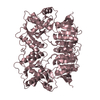


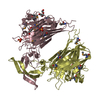
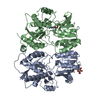
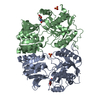
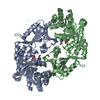


 PDBj
PDBj





